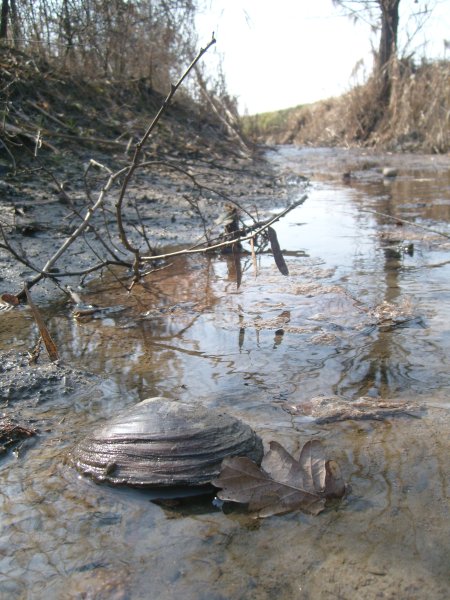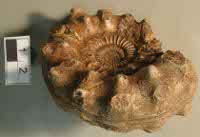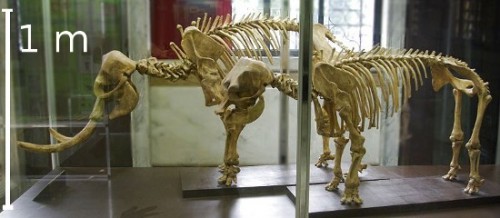Stefano Rossignoli – 5 marzo 2011
Tolto un piccolo ripasso di Anatomia Comparata, materia che mi ricorda amici e anni intensi all’università di Milano, volevo solo dare qualche spunto per captare alcune differenze di forma e funzione tra le unghie dei vertebrati e per introdurre la Morfologia Funzionale tra gli argomenti di scienzafacile.it…
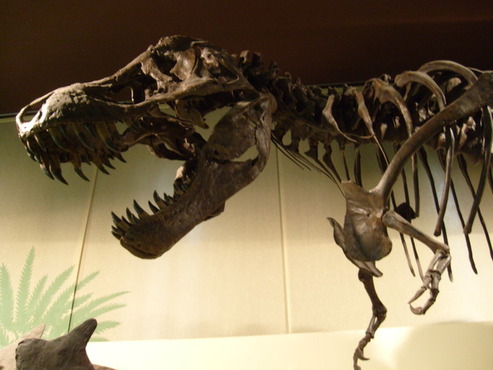
Giusto per fare un esempio sciocco di morfologia funzionale, ogni tanto in museo a Milano mi dicono che le zampe anteriori dei Tirannosauri erano piccole perchè non servivano, ma credo (e mica solo io!!!) che qualche funzione ce l’avessero. Oggi in effetti il mondo scientifico ha compreso che, nel mondo dei viventi, qualsiasi forma (o morfologia) per quanto difficile da comprendere ha un suo perchè ed una sua funzione!
In accordo con la teoria dell’evoluzione di Charles R. Darwin le forme naturali (o caratteri se volete) sono frutto di adattamento all’ambiente e selezione da parte dell’ambiente stesso.
Parliamo quindi oggi di unghie!!!
Già, UNGHIE! Ma prima ho detto artigli e adesso dico unghie?? Perchè mai?
Quando in Anatomia comparata dei Vertebrati si studia l’apparato tegumentario, si arriva anche alle unghie, che sono formate soprattutto da una proteina chiamata cheratina che in certe zone del corpo, in questo caso in fondo alle dita, impregna totalmente le cellule dell’epidermide formando la parte cornea, un po’ duretta ma non troppo che tutti conosciamo come unghia…
La solita necessità di fare chiarezza sulle distinzioni, ha imposto agli studiosi di dare nomi diversi ai vari tipi di unghie tra cui, le nostre chiamate unghie tegolate, gli zoccoli degli ungulati e gli artigli di un sacco di altre bestiole…
Mi sembra inutile parlarvi delle differenze fra i tre tipi di unghia copiando un testo di anatomia comparata, quindi vi do un bel link ad un libretto vecchiotto, ma che mi pare vada ancora bene per questo argomento e leggetelo pure voi:
Padoa – Manuale di anatomia comparata pag.126 ‘Unghie’ (da google libri)
Avete notato che si parla di ‘unghia propriamente detta‘? E’ un modo per dire: “Guarda che l’unghia vera e propria è quella lì e non tutto l’artiglio!”. Nell’artiglio, che sia di rettile o di mammifero o di uccello (che comunque per i cladisti sono tutti rettili!), l’unghia propriamente detta (lamina superiore robusta, e solea inferiore più sottile) ricopre l’ultimo osso (o falange) del dito, anch’esso uncinato, detto falange ungueale.
Ma a me non interessa parlarvi di questo. Mi interessa sapere e poi raccontarvi chi ha gli artigli e cosa se ne fa!!!
Se lo chiedessi ai bambini, la maggior parte mi direbbe che gli artigli li hanno gli animali carnivori e che servono per uccidere la preda o giù di lì MA, se la sera prima avessero visto un bel documentario un po’ scientifico o un libricino di animali fatto bene, penso che questi simpatiche menti così attive e intraprendenti mi darebbero mooolto filo da torcere con una moltitudine di risposte… e alcune certamente imprevedibili e a me sconosciute!
Questo è un blog, quindi, visto che dopo aver letto, nessuno dovrà sostenere un esame di scienzafacile.it (!), l’ordine con cui partire lo decido io anche se non sarà necessariamente didattico e da chi partiamo?
Da questo qui:
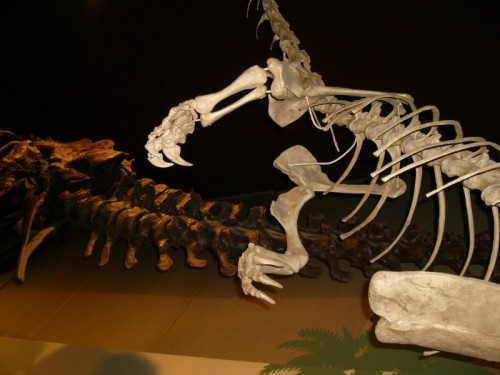
Un fossile, già! Un dinosauro per l’esattezza! E’ lungo solo qualche metro. Non è grandissimo. Gli appassionati staranno già sorridendo, invece gli altri si chiederanno magari dove sia finita la testa… Domanda più che giusta, ma torniamo agli artigli. Per quanto riguarda i fossili, ricordatevi che l’unghia propriamente detta normalmente non si conserva ma rimane solo la parte ossea dell’artiglio, chiamata falange ungueale…
Guardate quelli della ‘mano’ sinistra che si vedono così bene (la chiamiamo mano per comodità, rispetto a scrivere ogni volta ‘parte terminale della zampa anteriore sinistra formata dai carpali, metacarpali falange ed un sacco di altre ossicine’!!!).
Se ora chiedessi a chi non lo ha riconosciuto cosa mangiava questo qui? Mi dovrebbe rispondere:”E chi lo sa? Mica me lo hai fatto guardare in bocca”!!! Giustamente, per capire cosa mangiava un animale del passato dovremmo poter studiare i suoi denti e la forma del cranio su cui si inserivano i muscoli che muovevano la mandibola… Il tutto deriva dallo studio degli animali attuali in cui si è visto che chi mangia cose simili ha anche bocche e adattamenti simili tra loro.
Ebbene questo qui sopra è un Plateosaurus di cui Daniele Tona ci ha descritto la dieta in questo bellissimo articolo sui dinosauri vegetariani!
Già. Era un vegetariano! Non si offenda chi lo sapeva già e non ci rimanga male chi pensava il contrario, ma gli artigli non servono per mangiare anche se in qualche caso Leggi tutto “Gli artigli dei Vertebrati, fatti per correre, per mangiare, per arrampicarsi, per uccidere…”



